ENTS,
The third day of our expedition on 9/4/07 started out with a
glorious
sunny morning. We met up with Tony Kelly the evening before and
mapped
out our plan of attack. Today's trip was to put in at Thompson
Island
and canoe to Tidioute (~12 miles), stopping on all the named
wilderness
islands in this section of the river to document various tree
species of
hopefully noteworthy size and stature. We didn't go far before
we were
greeted by a total of four bald eagles in the vicinity of R.
Thompson
Island, two adults and two immatures. It was a prelude of what
was to
come on an incredibly beautiful day on the river.
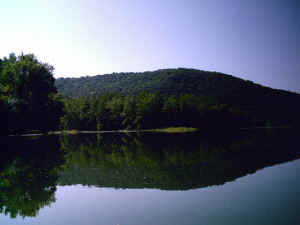
R. Thompson Island - photo by Ed Frank
The first named island we came to was R. Thompson Island. It is
located
1.8miles downstream from Thompson Island. It's about 30 acres in
size,
a half a mile long and a tenth of mile wide.
http://www.fish.state.pa.us/watertrails/alleg/trailmap.htm
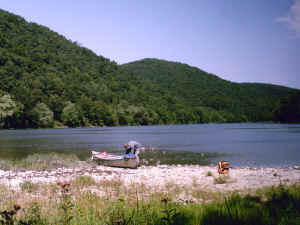
Anthony Kelly and canoe - photo by Ed Frank
We beached at the top of the island and worked our way
downstream,
spreading out to recon the island as we went. It wasn't long
before we
were working our way along an old river channel within the heart
of the
island. It appeared we weren't going to find anything of note
until we
got along the eastern shore where we picked up some decent
single stem
silver maples, see below. A little farther down the island an
old
bitternut hickory came into view that appeared to have some age
that I
would classify as having "old growth" stature
(buttress basing, 'crooked
arm' branching, and thick moss layered trunk). I was beginning
to think
we weren't going to find any trees over 120ft. That's when Tony
came
across a nice stand of sycamore in the western central part of
the
island. Tony's find, was a pleasant surprise, with his clump of
sycamore coming in at the upper 120's to low 130's.
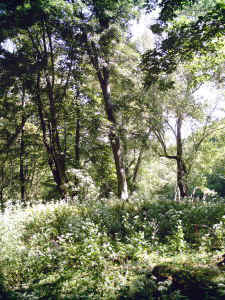
Interior or R. Thompson - photo by Ed Frank
The center of the island had a nice stand of young white ash
dominating
the canopy. Many of these islands were logged probably decades
ago, if
not over 150 years ago, to varying extent. Others have been
flooded
many times over the years keeping the overall age of the
majority of the
trees fairly young. It always seemed though, that the more we
looked,
there were always some trees of age, albeit scattered, on
virtually
every island we came to. These islands were an ecosystem
constantly in
transition from pioneer species to mature to old trees, then
being
washed our scoured out in places, starting the process over
again. It
was quite interesting to view a "snapshot" of how
these islands were
forming, eroding, and reforming by the creative forces of the
river over
decades. It brought to mind some of Dr. Tom Diggins'
observations of
small island formation in Zoar Valley from past presentations.
R.
Thompson Island stats follows:
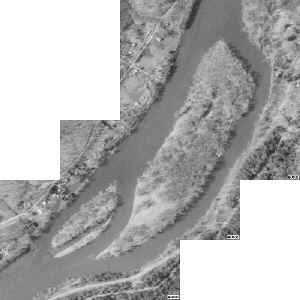
9/4/07 (Frank, Kelly, Luthringer)
R. Thompson Island
Species CBH Height Comments
Bitternut hickory 8.5 108.1+
"old growth" tree
Silver maple 13.1(2x)
91.5
Silver maple 13.4 102.1+
Sycamore 11.6 102+
Sycamore 6.6 103.2
Sycamore 9.1 114.1+
Sycamore 12 122.7
Sycamore 10.7 131.3
Species present but not measured = black locust, slippery elm,
Vitus
sp., white ash
Invasives = garlic mustard, Japanese barberry, Japanese
knotweed,
multiflora rose,
1.5miles further downstream was Stewards Island. It wasn't on
the named
list of "wilderness" islands, but we wanted to stop
since it was of
pretty good size. We actually didn't even get to Stewards. We
put in
at the top of what we thought was Stewards, but turned out to be
a large
adjacent island just upstream. This small un-named island was
smaller
than R. Thompson, 19 acres in size, at half a mile long by one
tenth of
a mile wide. Stewards Island, just a stones throw downstream is
51acres
in size, at 0.7miles long by 0.2miles wide. We searched for
noteworthy
trees on the un-named island, but were soon confronted with a
wall of
invasives (multiflora rose & knotweed) and quickly lost
interest. By
the time we got back to the canoe, we realized we needed to
start to put
our blinders on if we were going to finish all the named islands
designated as "wilderness" in this section of river.
Another trip to the actual Stewards Island would most likely
prove
fruitful. As we canoed down the eastern channel beside Stewards,
we
noted a number of decent silver maple and sycamore that would
most
likely have made it into the 12x100 class. The stats for the
un-named
island above Stewards Island follows:
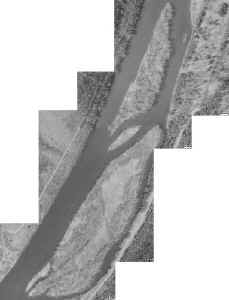
Stewards (un-named) Island
Species CBH Height Comments
Bitternut hickory 6.4 84.1+
Black walnut 6.2 85.3
Silver maple 11.6 N/A largest
stem
Species present but not measured = Am. Hornbeam, black birch,
black
willow, hawthorne, silver maple, sycamore
Invasives = Japanese knotweed, multiflora rose
The next island we were to pass was Feulhart Island, 2.1miles
downriver
from Stewards. It is 25acres in size, 0.6miles long by 0.1miles
across.
It wasn't named as part of the wilderness and had a large
privately
owned cabin in the middle of it, so we did not disembark to save
time.
I'm kind of kicking myself for not making a short stop. There
was a
very nice sycamore and fat black walnut beside the private
cabin. It
also sported the only white pine we saw on any of the islands
during the
four day trip. Ed got some rough laser measurements from the
canoe for
the white pine as we floated by and put it to around 115ft. Not
noteworthy in height, but probably each three species of tree we
noted
(sycamore, black walnut, white pine) would've gone over 12ft CBH.
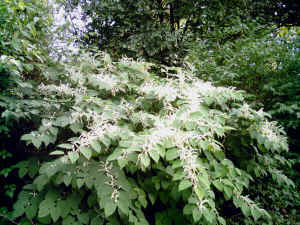
Japanese Knotweed on Courson Island - photo by Ed
Frank
1.1miles further downsteam was the last island we were to stop
on for
the day, Courson Island. It is 62acres in size, 0.9miles long by
0.1miles across. Found our first catalpa here,
just inside the
tree-line. We thoroughly worked this entire island which was
another
island dominated by silver maple, bitternut hickory, and
slippery elm.
We made our way diagonally across the island until we hit
another solid
patch of knotweed then had to bump out on the eastern edge
again. We
then made our way down an internal dry riverbed channel cutting
across
the island and were almost ready to throw in the towel. Then I
looked
off into the snotweed forest and saw a nice sycamore about 30
yards in.
this one was worth the bushwhack, (too bad Tony left his machete
in the
car, it certainly would've come in handy). It was definitely the
biggest tree we found that day at 15.2ft CBH x 129ft+ high. A
very nice
addition to our 12x100 trees.
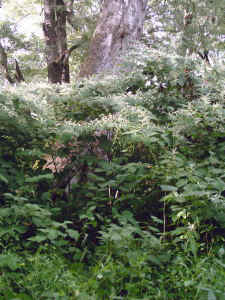
Large sucamore among the knotweed - photo by Ed Frank
We continued to follow the old river channel which took a
90degree turn
west across the island. Shimmied up a steep bank of knotweed to
a nice
little flat of white ash, basswood, and bitternut hickory. Ed
soon
found another fat hawthorne that went to 4.9ft CBH x 42.5ft high
x
45.9ft avg crown for 112.8AF Points, one of the largest
documented in
the state.
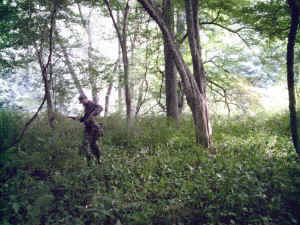
While Ed & I were measuring the hawthorne, Tony ventured on
and came
back with news of a fat butternut ahead. Turned out to be the
largest
I've personally seen in the field at 8ft CBH (above branching) x
63.8ft
high. It was 9ft circumference just below branching. Regrettably,
it's
been affected by the butternut canker, but is still producing
nuts.
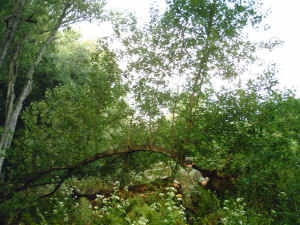
New "trunks" growing on a fallen sycamore
- Ed Frank
Courson Island's stats follows:
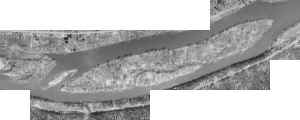
Courson Island
Species CBH Height Comments
Am. Basswood 7 78.1+
Am. Basswood 7.9 90.6+
Bitternut hickory N/A 94.6
Bitternut hickory 7.4 107.4
Bitternut hickory 5.1 108.1+
Black birch 7.7 N/A snag
Black locust 9.8 96.1+
Butternut 8 63.8
Catalpa 5.9 61.7
Hawthorne sp. 4.9 42.5 113
AF Points
Pignut hickory 7.2 94.5
Pignut hickory 5.5 94.5+
Silver maple 11.5 96+
Silver maple 12.2 97
Silver maple N/A(3x)
112.2
Slippery elm 9.3 69.1+
Staghorn sumac 1.5 20
Sycamore 10.9 85.5+
Sycamore 15.2 129 massive,
in snotweed
forest
White ash 7.4 99
White ash 9.1 111.1+
Courson Island Rucker Index = 93.62
Species CBH Height
Sycamore 15.2 129
Silver maple N/A(3x)
112.2
White ash 9.1 111.1+
Bitternut hickory 5.1 108.1+
Black locust 9.8 96.1+
Pignut hickory 5.5 94.5+
Am. Basswood 7.9 90.6
Slippery elm 9.3 69.1+
Butternut 8 63.8
Catalpa 5.9 61.7
Species present but not measured = black willow, silky dogwood,
vitus
sp.
Invasives = Japanese knotweed, multiflora rose, tatarian
honeysuckle
Part 3 of the expedition from West Hickory to Tionesta to
follow.
Dale
|